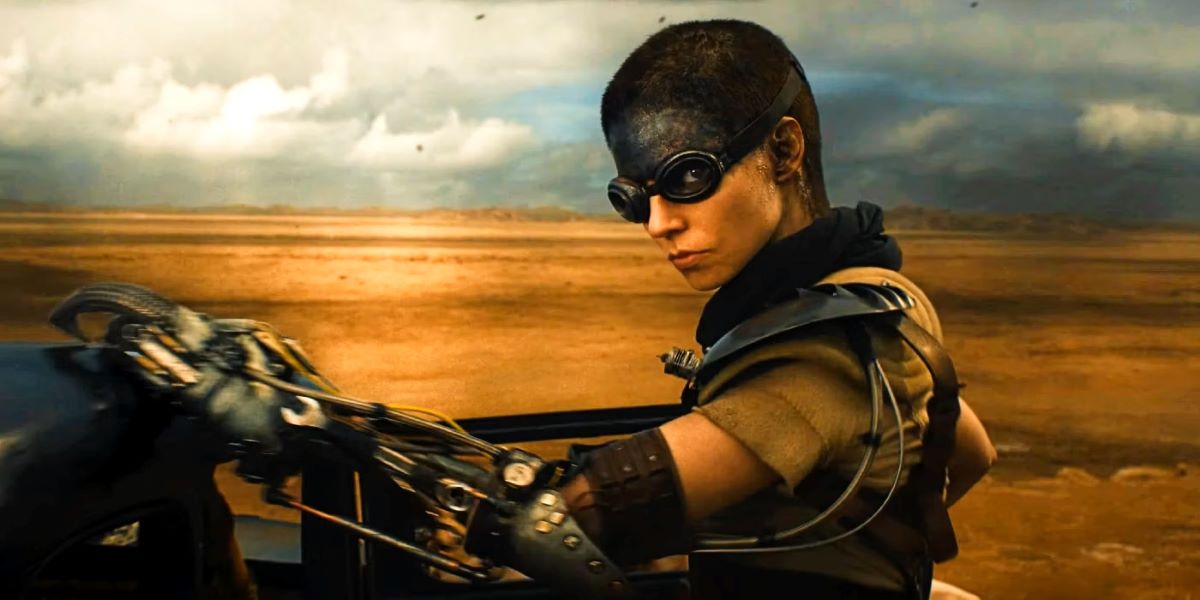MOVIE REVIEWS
Furiosa: A Mad Max Saga
Directed by George Miller
“Nobody knows what is true anymore. Humanity has no rules and terrorizes itself.” This is how the voiceover introduces us to the neo-barbaric, post-apocalyptic world of Furiosa: A Mad Max Saga, the fifth installment of George Miller‘s creative journey that began 45 years ago with the unforgettable Mad Max (1979). Unlike the previous Mad Max: Fury Road, which enchanted the Cannes Film Festival in 2015 and received ten Oscar nominations, winning six, Furiosa serves as a prequel. It narrates the childhood, adolescence, and formative years of the one-armed heroine played by Charlize Theron in Fury Road, portrayed here by Alyla Browne as a child and Anya Taylor-Joy as an adult, becoming a cynical and relentless warrior.
Apart from the new settings of Gastown and Bullet Farm, the scene remains similar to the previous films: desolate lands, red sand, endless dunes, and outcasts living like jackals in the wasteland, banding together in tribes. Fires in the desert, blinding dust trails, oil and water as the Holy Grail, survival as the only goal, and plunder as the only mode of interaction.
In this episode, more than in any previous one, George Miller—imbued with the kinetic energy and adrenaline of a young man, combined with the wisdom and culture of an octogenarian—reveals the mythological framework and archetypal structure supporting the saga. From the first episode, Miller openly acknowledged working with myths, studying their interchangeability across cultures with the help of Jungian specialist John Campbell.
Miller’s references are explicit and easily identifiable: Homeric poems (the siege from the Iliad and the return journey from the Odyssey), and the Bible. Furiosa longs to return to the lost Paradise, the edenic Green Place from which she was abducted after eagerly biting a red apple plucked from a tree. Homeric myths weave into the story’s details (the war-rig filled with warriors to breach the besieged citadel like Greek warriors in the Trojan horse), mingling with the mythologies of the warrior woman. On this archetypal foundation, Miller grafts a wealth of myths, legends, and cinematic icons: the fort siege reminiscent of Fort Apache, the chase scenes akin to Stagecoach, punk-like monsters as in The Warriors or Escape from New York, more twisted motorcycles than in Easy Rider, chariots pulled by motorcycles evoking Ben Hur, trucks’ centrality as in Duel and Raiders of the Lost Ark, and epic-primitive battles like in Star Wars.
Furiosa is not only a cornucopia of myths and archetypes but also an incredible hybrid of genres: part coming-of-age novel, part action movie, part dystopian-post-apocalyptic film, part revenge movie, part neo-baroque road movie, and part Antipodean western, with roaring motorcycles instead of mustangs and ponies of the Old West. The final effect is both frenetic and bewildering: as Furiosa, with her forehead painted black, fights primarily with her eyes—wide open, burning, lost, fierce, disillusioned, sharp—the world around her sinks into a grotesque neo-tribalism. Behind the masks of various warlords and their slaves, one can glimpse more than a trace—albeit in a kitschy version—of the “real” world we live in. By the end of the film, one might leave the cinema suspecting that our world—with its Dementus and Scrotus—is paradoxically not so different from the desolate lands of Furiosa.





